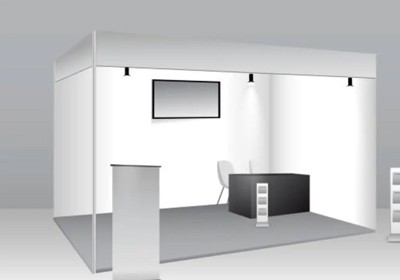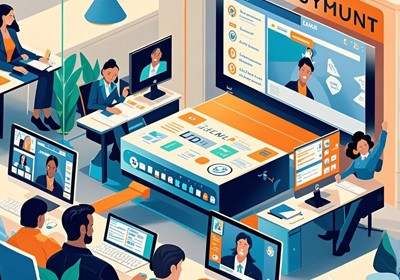The Cost of a Trade Show Booth in the USA: A Comprehensive Guide
Jun 16,2025
When planning to exhibit at a trade show, one of the most important factors to consider is the cost of the booth. Exhibiting at a trade show can be a powerful marketing tool, but it comes with significant costs.
Understanding these expenses upfront will help you budget properly and ensure a successful event. In this article, we’ll break down the various components that contribute to the cost of a trade show booth in the USA.
What Are Trade Shows and Exhibitions?
Trade shows are industry-specific events where businesses gather to display products, exchange knowledge, and meet potential customers. They differ from general expos by being exclusive to industry professionals. These events can range from small local gatherings to large international exhibitions.
Is Attending a Trade Show Worth It?
Participating in a trade show offers several benefits:
- Networking: Connect with industry professionals and potential clients.
- Brand Exposure: Enhance visibility among a targeted audience.
- Lead Generation: Directly engage with qualified leads.
- Industry Insights: Keep up with trends and competition.
However, the costs can be high, and ROI may take time to materialise, so careful planning is essential.
Factors That Influence Trade Show Booth Costs
Trade show booth costs can vary widely depending on several factors. The size, location, type of event, and level of customisation all play a role in determining how much you’ll spend. Here are the key factors to consider:
1. Booth Size and Location
The size of your booth space is one of the first expenses you’ll encounter. The larger the booth, the higher the rental fee. Booth space is typically rented by the square foot, and most trade shows offer different size configurations, often in increments of 10×10 feet. A basic 10×10 booth typically costs between $2,000 and $10,000, depending on the event’s prestige and location.
Small Booths (10×10 feet): These are the most common and affordable options, suitable for small to mid-sized businesses or startups. Expect to pay between $2,000 and $8,000 for space at a mid-range event.
Medium Booths (20×20 feet): A larger booth allows for more visibility and space to showcase products, but costs will range from $10,000 to $30,000.
Large Booths (30×30 feet or larger): For big companies looking to make a statement or launch new products, large booths can cost upwards of $30,000 to $50,000, or even higher, depending on the location and demand.
The location of the booth also affects pricing. Booths in prime areas, like those near entrances or near popular exhibitors, will generally come with a premium price tag.
2. Booth Design and Construction
Another key component of trade show booth costs is the design and construction. You can either go for a simple, pre-built booth or opt for a custom-designed booth.
Pre-built booths: These are generally more affordable, ranging from $2,000 to $10,000 for a 10×10 space. They are modular and can be used for multiple events.
Custom booths: Custom booths, on the other hand, can be significantly more expensive. Depending on the complexity of the design, materials used, and features included, the cost can range from $10,000 to $100,000 or more. Custom booths allow you to create a unique brand experience but come with a higher price tag.
Additionally, the materials used (e.g., fabric, wood, or metal) and the inclusion of features like lighting, video screens, and interactive displays will affect the overall price.
3. Shipping and Storage
Transporting your booth and materials to and from the trade show is another significant cost. Shipping fees are calculated based on the weight, size, and distance of your booth, as well as any special handling required. For a typical trade show booth, shipping can cost anywhere from $1,000 to $5,000.
Additionally, many exhibitors choose to store their booth components until the next event. Depending on the booth’s size and storage duration, storage costs range from $500 to $3,000. These fees depend on the storage facility and how long the booth needs to be kept.
Handling fees, which involve the labor required to set up and tear down the booth, are another consideration. These can cost anywhere from $500 to $2,500, depending on the event’s duration and the complexity of the booth.
4. Electricity, Internet, and Utilities
Most trade shows charge extra fees for basic utilities like electricity and internet access. These charges can vary, but on average, you can expect to pay $500 to $2,000 for electricity, depending on your booth’s needs (e.g., lighting, video screens, etc.).
Wi-Fi access at trade shows is also typically an additional cost, and you may be required to purchase a separate internet package for your booth. Depending on the provider and the event, these costs can range from $300 to $1,500.
5. Staff Costs
Exhibiting at a trade show also means you need to have staff on hand to engage with potential customers. This involves not just wages but also expenses for travel, accommodation, and meals. Staff costs can quickly add up, especially if the event lasts several days.
On average, you can expect to spend between $500 to $2,500 per staff member on travel, lodging, and meals. Additionally, the time spent training your team to effectively promote your products and services at the show should be considered.
6. Marketing and Promotional Materials
In addition to the booth itself, you’ll likely need to invest in marketing and promotional materials to enhance your presence at the trade show. These materials include brochures, giveaways, branded merchandise, and signage.
Marketing costs can vary based on the quantity and quality of materials. For example, printing and distributing marketing collateral might cost around $1,000 to $5,000. Adding branded merchandise, such as pens, t-shirts, or tote bags, can increase this cost further.
7. Lead Capture and Follow-up
Trade shows are a great opportunity to capture leads and connect with potential customers. To maximize this opportunity, you might want to invest in lead capture technology, such as scanners or apps, that allow you to quickly collect contact information from interested parties.
Lead capture solutions can cost anywhere from $500 to $2,000, depending on the technology and services provided. Additionally, after the show, you’ll need to allocate budget for follow-up activities, which may include email campaigns, phone calls, and more.
Total Estimated Costs for a Trade Show Booth
Given all the factors involved, the total cost of exhibiting at a trade show can vary significantly. For a small, basic booth, you might spend around $5,000 to $10,000. However, for a larger, custom-designed booth with additional services and high-quality marketing materials, the cost can easily exceed $50,000 to $100,000.
Here’s a rough breakdown of potential costs:
- Booth Space: $2,000 to $50,000
- Booth Design and Construction: $2,000 to $100,000
- Shipping and Storage: $1,000 to $8,000
- Utilities (Electricity, Internet, etc.): $500 to $3,000
- Staff Costs: $500 to $2,500 per person
- Marketing and Promotional Materials: $1,000 to $5,000
- Lead Capture and Follow-Up: $500 to $5,000
- Total: $5,000 to $100,000+, depending on the scale of your booth and additional services.
Maximising Your Trade Show ROI
While exhibiting at a trade show can be costly, it can also provide a significant return on investment (ROI) if done right.
To ensure you’re getting the most out of your investment, carefully consider your objectives, budget, and what you hope to achieve at the event. Opt for a booth size and design that aligns with your goals, and plan your marketing efforts to generate the most leads.
By keeping track of all associated costs and planning ahead, you can ensure that your trade show experience is both successful and cost-effective.
Making Your Brand Stand Out with Aplus Exhibits
Partnering with a professional provider like Aplus Expo can help elevate your presence at trade shows. Aplus Expo offers custom booth designs, full-service event management, and technology integration to ensure your brand stands out and attracts the right audience.
--- END ---




